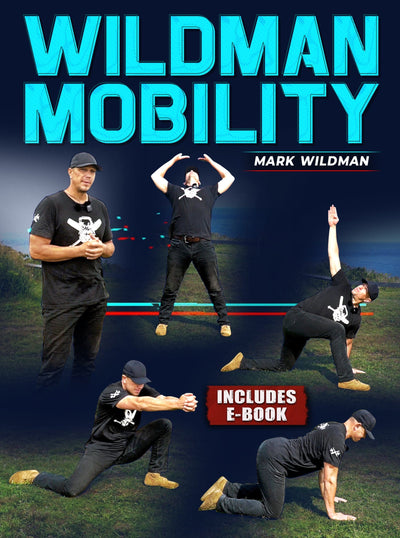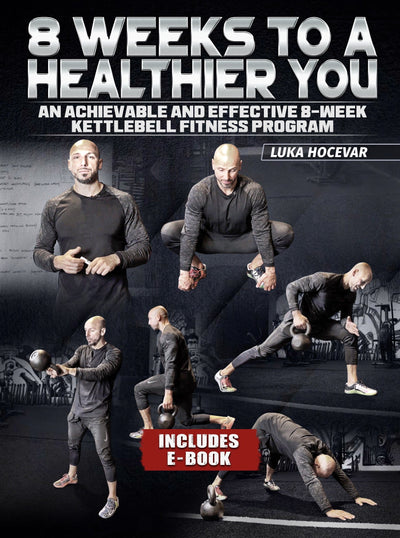Around the World Kettlebell
The "Around the World" kettlebell exercise is a dynamic and engaging fitness movement that has gained popularity worldwide over the past few decades. Kettlebells, which originated in Russia in the 18th century, have become a versatile tool for strength and conditioning. The "Around the World" exercise is one of many kettlebell movements that have transcended borders and found a place in gyms and home workouts globally.
What this article covers:
Kettlebells, originally developed in Russia during the 18th century, have evolved into a versatile and widely embraced fitness tool with a rich historical background. Initially used as counterweights for goods in Russian markets, kettlebells gained recognition for their effectiveness in building strength and endurance among the Russian military and athletes. Over time, they became an integral part of the Russian culture and fitness tradition. In recent decades, kettlebells have transcended their Russian origins and garnered global popularity as a functional and efficient means of enhancing physical fitness, strength, and overall health. Today, kettlebells are an integral part of many fitness regimens, combining elements of strength training, cardiovascular conditioning, and functional movement to help individuals achieve their fitness goals worldwide.
Kettlebells in general are a great way to limit how much equipment you need, and still get a great workout. Whether you are looking for tips on how to perform specific exercises like kettlebell marches for core or complete upper body kettlebell workouts or even kettlebell core workouts we have you covered!
Benefits
The "Around the World" kettlebell exercise offers a plethora of fitness benefits. First and foremost, it is an excellent full-body workout that engages multiple muscle groups simultaneously. As you swing the kettlebell around your body, you engage your core, shoulders, arms, and legs. This compound movement can help improve your cardiovascular fitness, enhance muscular endurance, and increase strength.
Furthermore, this exercise enhances functional strength and stability, making it particularly beneficial for athletes and individuals seeking to improve their overall athleticism. It also promotes flexibility, as the movement requires a good range of motion in the shoulders and hips. Incorporating the "Around the World" kettlebell exercise into your routine can help with balance and coordination as well.
How to Perform
Performing the "Around the World" kettlebell exercise requires proper form and technique to avoid injury and maximize its benefits. Here's a step-by-step guide:
- Stand with your feet shoulder-width apart and hold a kettlebell by the handle with both hands, arms extended in front of you.
- Begin by swinging the kettlebell to your right side, passing it behind your back while keeping a firm grip.
- As the kettlebell comes around your right side, shift your weight slightly to the right and pivot on your left foot to allow the kettlebell to pass safely.
- As the kettlebell comes back to the front, switch directions and swing it to your left side, again pivoting on your right foot.
- Continue this circular motion, swinging the kettlebell around your body while maintaining a strong core and a controlled movement.
- Complete the desired number of repetitions, and then stop and rest as needed.
Safety Concerns
When engaging in the "Around the World" kettlebell exercise, safety and proper technique are paramount. Here's a guide on how to perform the exercise while considering safety precautions:
Start with an appropriate weight: Choose a kettlebell that aligns with your current fitness level, allowing you to maintain proper form and control throughout the exercise. It's better to begin with a lighter weight and gradually increase it as your strength and technique improve.
Maintain proper form throughout: Keep your back straight, engage your core muscles, and ensure your shoulders remain relaxed. Avoid rounding your back or using jerky movements, which can place unnecessary strain on your muscles and joints.
Prioritize warm-up and cooldown: Just as with any exercise routine, warming up before attempting the "Around the World" kettlebell exercise is essential. Begin with dynamic stretches and gradually progress into the exercise. Afterward, perform cooldown stretches to prevent injury and aid in recovery.
Seek professional guidance: If you're new to kettlebell exercises, consider working with a certified trainer or fitness expert who can teach you proper form and technique. They can provide personalized guidance based on your fitness level and goals, ensuring a safe and effective workout.
Avoid overtraining: It's crucial not to overexert yourself. Integrate the "Around the World" kettlebell exercise into a well-rounded fitness routine that encompasses strength training, cardiovascular exercise, and flexibility work. This balanced approach will help you achieve optimal results while reducing the risk of overuse injuries.
By following these safety guidelines and mastering the proper technique, you can make the most of the "Around the World" kettlebell exercise, enhancing your strength, endurance, flexibility, and overall fitness while minimizing the risk of injury.
Did you find the blog helpful? If so, consider checking out other guides:
- Kettlebell Tricep Workout
- Building Muscle with Kettlebells
- Kettlebell Pushups
- Kettlebell Cleans
- Kettlebell Lift
- How to Do a Kettlebell Clean
- Kettlebell Overhead Tricep Extension
- How to Do Kettlebell Swings
- Alternatives to Kettlebell Swings
- 100 Kettlebell Swings a Day
- Kettlebell Swings with a Dumbbell
- 10,000 Kettlebell Swing Challenge
- How Many Kettlebell Swings
- 300 Kettlebell Swings a Day
- Banded Kettlebell Swings





